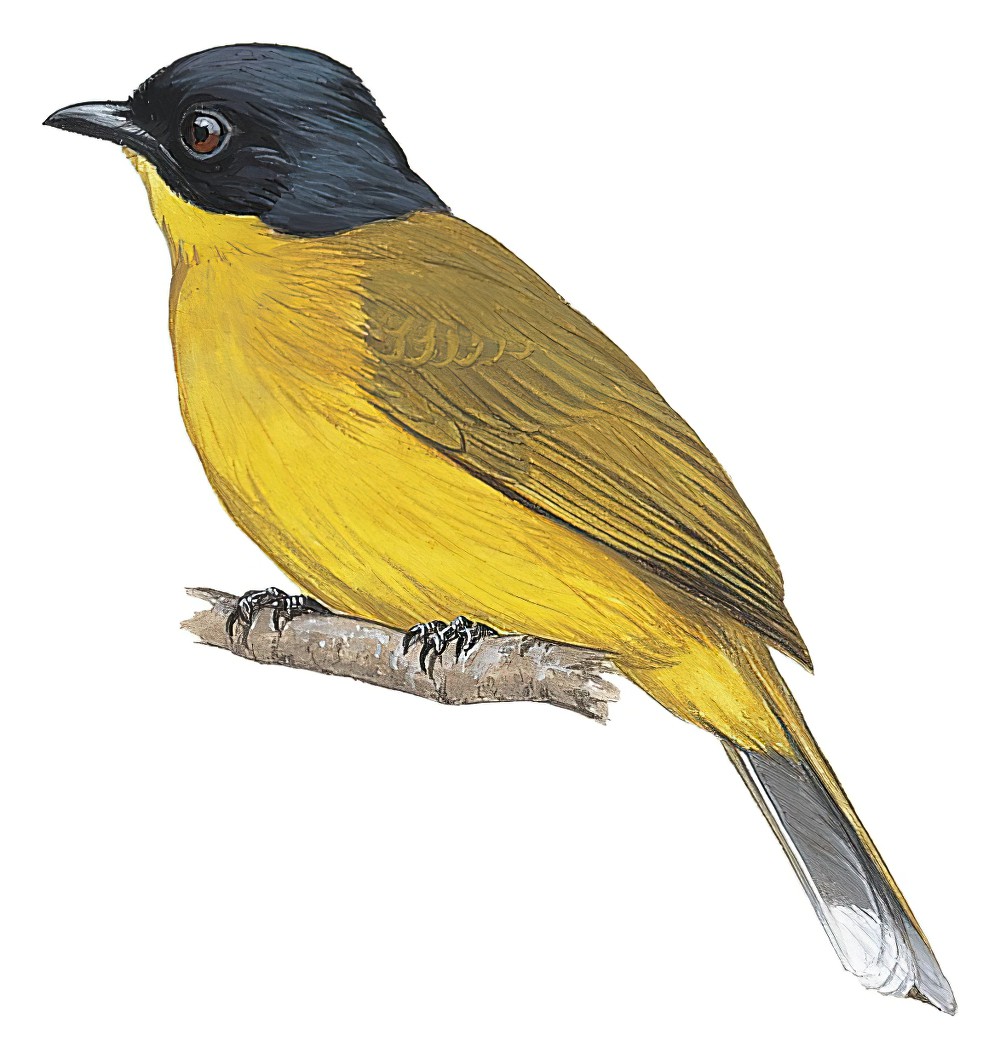Black-capped Bulbul / Rubigula melanicterus

Black-capped Bulbul
SCI Name:
Protonym: [Muscicapa] melanictera Syst.Nat. 1 pt2 p.941
Taxonomy: Passeriformes / Pycnonotidae / Rubigula
Taxonomy Code: bkcbul2
Type Locality: Ceylon.
Author: Gmelin, JF
Publish Year: 1789
IUCN Status: Least Concern
DEFINITIONS
Rubigula
(syn. Pycnonotus Ϯ Ruby-throated Bulbul P. dispar) Med. L. rubinus ruby < L. rubeus red < ruber red; L. gula throat; "Br. gularis would seem to be a true congener of Br. dispar, (Horsf.,) Sw. To the type of the two latter species, I shall now provisionally give the name Rubigula ... Rubigula, nobis. There is unfortunately no specimen in the museum from which I can define this group, but of the present series it makes the nearest approach to Pycnonotus, and has the rump uniformly coloured with the back, and a subquadrate tail, unlike the next form [Brachypodius]. The species (at least in the male sex) are remarkable for the brilliant ruby, or sometimes orange-ruby, hue of the throat, the feathers of which are rigid and glistening. Three species would appear to have been ascertained. 1. R. dispar, (Horsfield), Lin. Tr. XIII, 150. Malay countries. 2. R. gularis, (Gould), Proc. Zool. Soc. 1835, p. 186; Brachypus rubineus, Jerdon. Southern India. 3. R. ——, (Temminck), p. c. 382, fig. 2, as noticed in Griffith's 'Animal Kingdom,' VI, 390. Java." (Blyth 1845); "Rubigula Blyth, 1845, Journ. Asiat. Soc. Bengal, 14, p. 576. Type, by subsequent designation, Turdus dispar Horsfield. (G. R. Gray, 1855, Cat. Gen. Subgen. Birds, p. 47.)" (Deignan in Peters 1960, IX, 223).
melanictera / melanicterus
Gr. μελας melas, μελανος melanos black; ικτερος ikteros jaundice-yellow.
● ex “Troupiale jaune à calotte noire de Cayenne” (= ☼) of d’Aubenton 1765-1781, pl. 533 (syn. Gymnomystax mexicanus).
● ex “Black and Orange Finch” of Latham 1783 (syn. Melophus lathami).
● ex “Yellow-breasted Flycatcher” of Brown 1776, and Latham 1783 (Pycnonotus).
● ex “Merle Jaune Huppé” of Levaillant 1803, pl. 117 (artefact).
UPPERCASE: current genus
Uppercase first letter: generic synonym
● and ● See: generic homonyms
lowercase: species and subspecies
●: early names, variants, mispellings
‡: extinct
†: type species
Gr.: ancient Greek
L.: Latin
<: derived from
syn: synonym of
/: separates historical and modern geographic names
ex: based on
TL: type locality
OD: original diagnosis (genus) or original description (species)












